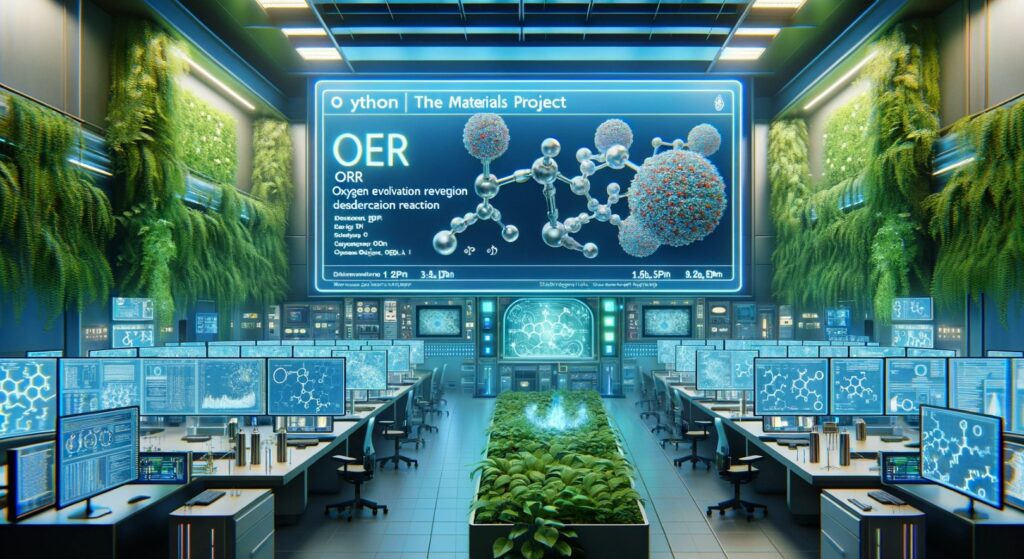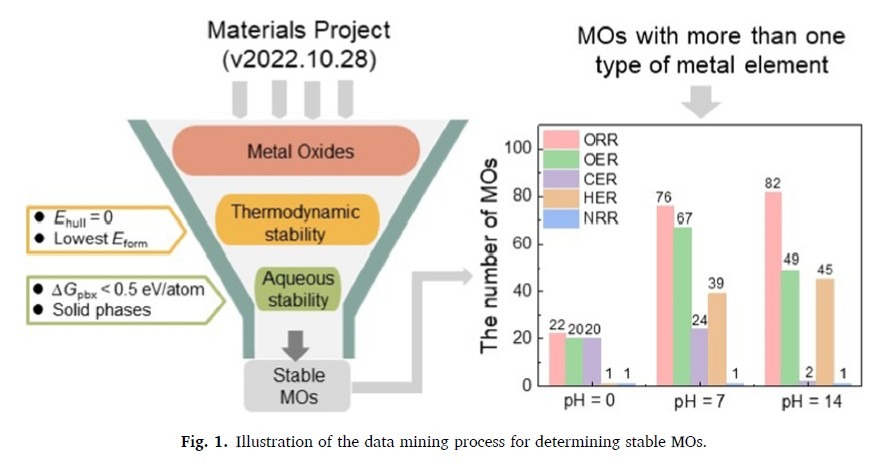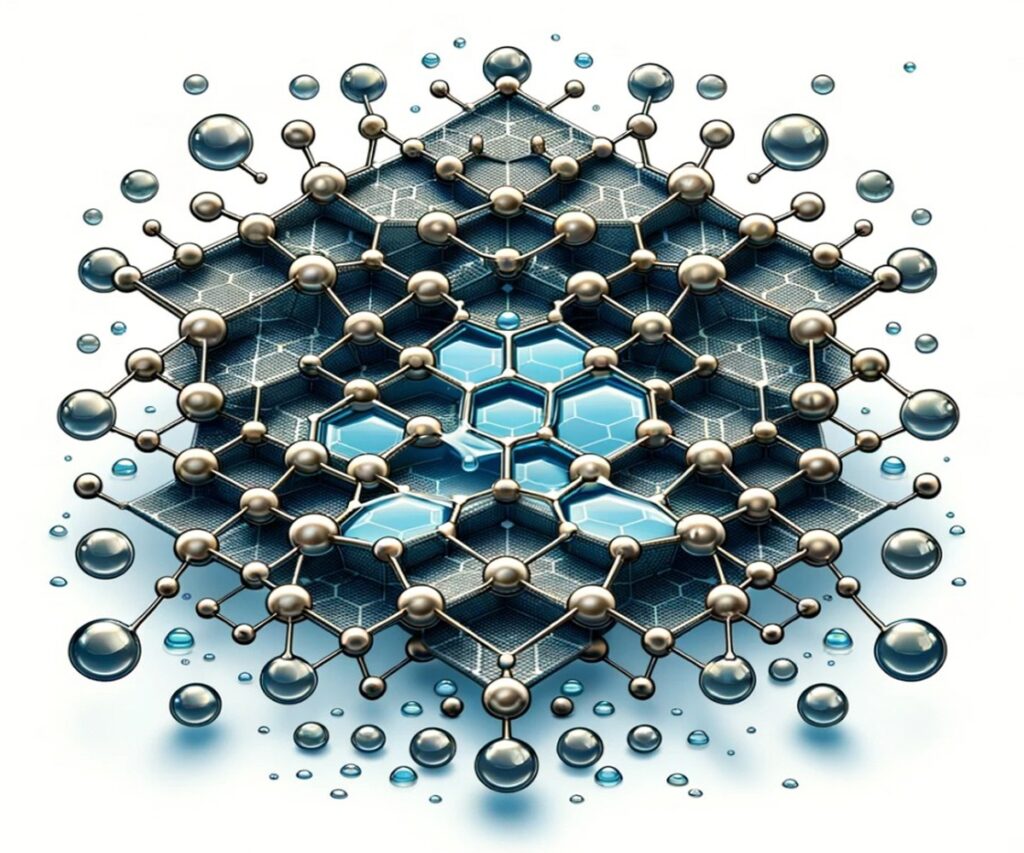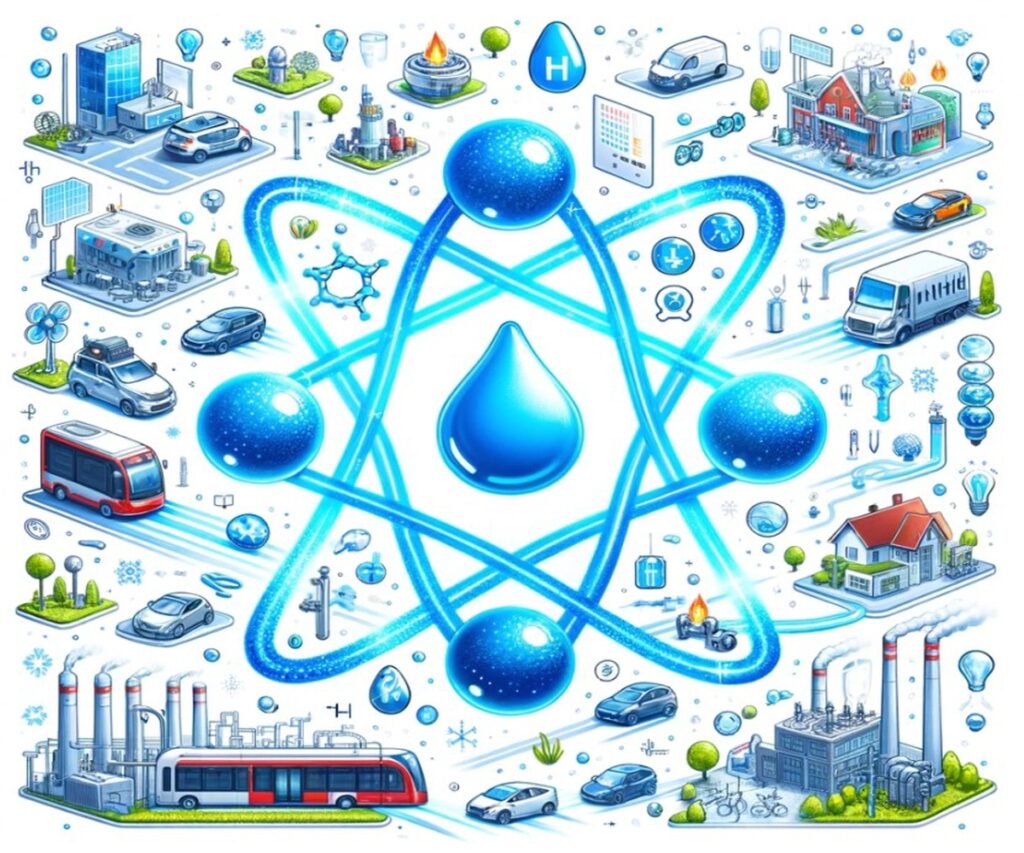Introduction
In the quest for sustainable energy solutions, the oxygen reduction reaction (ORR) and oxygen evolution reaction (OER) stand as critical processes in devices like fuel cells and electrolyzers. The search for efficient, low-cost electrocatalysts to facilitate these reactions is vital for advancing green energy technologies. Leveraging the power of the Materials Project, a comprehensive database of material properties, coupled with Python, a versatile programming language, researchers are paving the way for breakthroughs in electrocatalytic materials.

The Role of Electrocatalysts in ORR and OER
Electrocatalysts are substances that speed up electrochemical reactions without being consumed. For ORR and OER—key reactions in splitting water into oxygen and hydrogen—efficient electrocatalysts reduce the energy required to drive these reactions. Imagine a busy airport where travelers (electrons) need to get to their planes (reactant molecules) as quickly as possible. Electrocatalysts are like the express check-in services, helping everyone board swiftly and efficiently, thus speeding up the overall process.
Harnessing Python and the Materials Project for Electrocatalysis
The Materials Project and Python form a powerful duo in the hunt for new electrocatalysts. Here’s how researchers utilize these tools in a step-by-step exploration of metal oxides for ORR and OER:
Data Mining with Python: Researchers begin their exploration in the vast landscape of the Materials Project database, akin to starting a treasure hunt with a map. Python serves as their compass, guiding them through vast data terrains to find potential electrocatalysts.
Filtering the Candidates: Using Python scripts, researchers set criteria to filter out less promising materials, much like using a sieve to separate gold nuggets from ordinary rocks. This includes selecting materials based on cost-effectiveness and environmental safety.
Evaluating Thermodynamic Stability: Just as architects check the stability of a building’s foundation, scientists use thermodynamic principles to assess whether a material will be stable under operational conditions. They calculate metrics such as energy above hull (Ehull) and formation energy, ensuring the materials are not just theoretically stable but also practical for real-world applications.
Understanding Material Behavior: Pourbaix diagrams are like weather maps for materials, showing how they behave under different environmental conditions (pH and potential). Researchers use these diagrams to predict if a material will hold up under the acidic or alkaline conditions typical in ORR and OER reactions.
Tailoring for Specific Reactions: Different energy applications require materials to perform under specific conditions. For instance, a material might be suitable for ORR but not for OER. It’s like choosing the right type of fuel for different types of engines, ensuring optimal performance.
Python is like the chef’s knife in a gourmet kitchen, essential for slicing and dicing data to uncover insights quickly. The Materials Project database is the cookbook, offering a variety of ‘recipes’ (material properties) that can lead to successful dishes (electrocatalysts). Pourbaix diagrams are the cooking instructions, guiding researchers on how to ‘cook’ materials under different conditions to achieve the best results.
Through this meticulous computational methodology, the study pinpoints metal oxides that are not only theoretically stable but also likely candidates for experimental synthesis and application in electrocatalysis, thus paving the way for future practical assessments and technological advancements in green energy solutions.

Conclusion
By leveraging Python and the Materials Project, researchers are equipped with powerful tools to navigate the complex world of materials science. This approach not only accelerates the discovery of new electrocatalysts but also democratizes access to cutting-edge research, enabling innovation that could power the next generation of green technology. Through intelligent data analysis and a deep understanding of material behaviors, the path to sustainable energy solutions becomes clearer and more accessible.
The method through the intricate world of electrocatalysis, powered by the combined forces of the Materials Project and Python, has yielded promising insights into the potential of metal oxides as electrocatalysts for oxygen reduction and evolution reactions (ORR and OER). By employing advanced computational techniques to sift through extensive databases, researchers have successfully pinpointed several candidates that could revolutionize energy storage and conversion technologies. This conclusion delves into the current results achieved and the exciting prospects on the horizon.
Through meticulous data mining and stability evaluations, several metal oxides have emerged as frontrunners in the quest for efficient, cost-effective electrocatalysts. The use of Pourbaix diagrams to assess stability across various pH levels and electrode potentials has particularly highlighted materials that offer robust performance under the demanding conditions of ORR and OER.
The integration of Python has not only streamlined the data analysis process but also enhanced the precision with which materials are selected and evaluated. By automating the data handling and processing tasks, researchers can now focus on deeper insights and experimental verifications, accelerating the pace of discovery and implementation.
As the field of electrocatalysis progresses, bridging the gap between theoretical predictions and practical applications remains a critical challenge. Ongoing and future studies will need to focus on the practicalities of implementing these materials in real-world settings, understanding their long-term stability, and their interactions under operational conditions.
In conclusion, the exploration of electrocatalysts through the Materials Project and Python represents a pivotal step towards sustainable energy technologies. The current achievements provide a solid foundation for future innovation, promising a cleaner, greener future powered by advanced material science.
Source: Jia, Xue, and Hao Li. “Data Mining of Stable, Low-Cost Metal Oxides as Potential Electrocatalysts.” Artificial Intelligence Chemistry (2024): 100065.
https://doi.org/10.1016/j.aichem.2024.100065
※ This report has been compiled for the purpose of providing general information. It is based on data gathered by CHEMiFORGE. Should you have any inquiries or need to make decisions based on this report, it is advisable to consult with a CHEMiFORGE.


